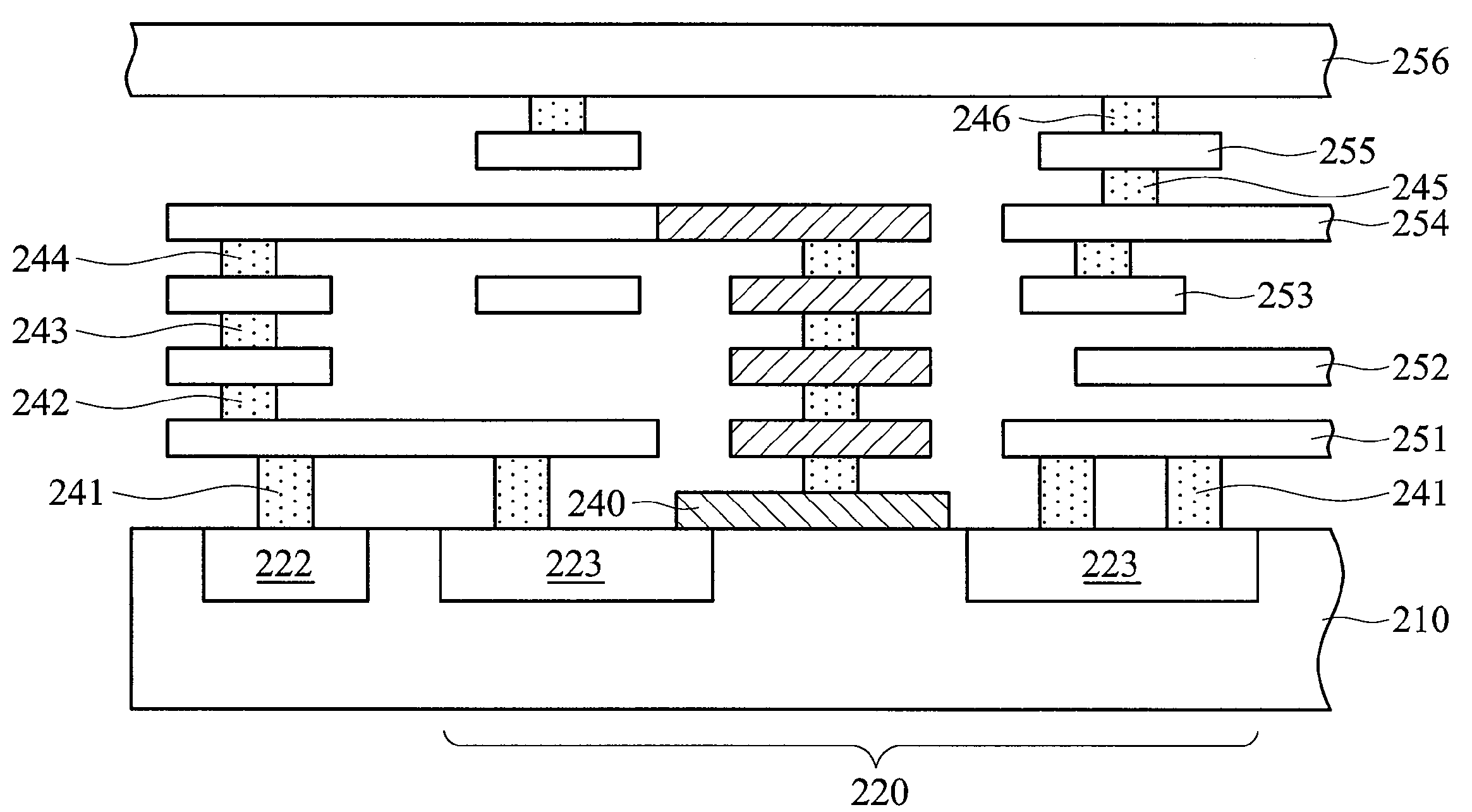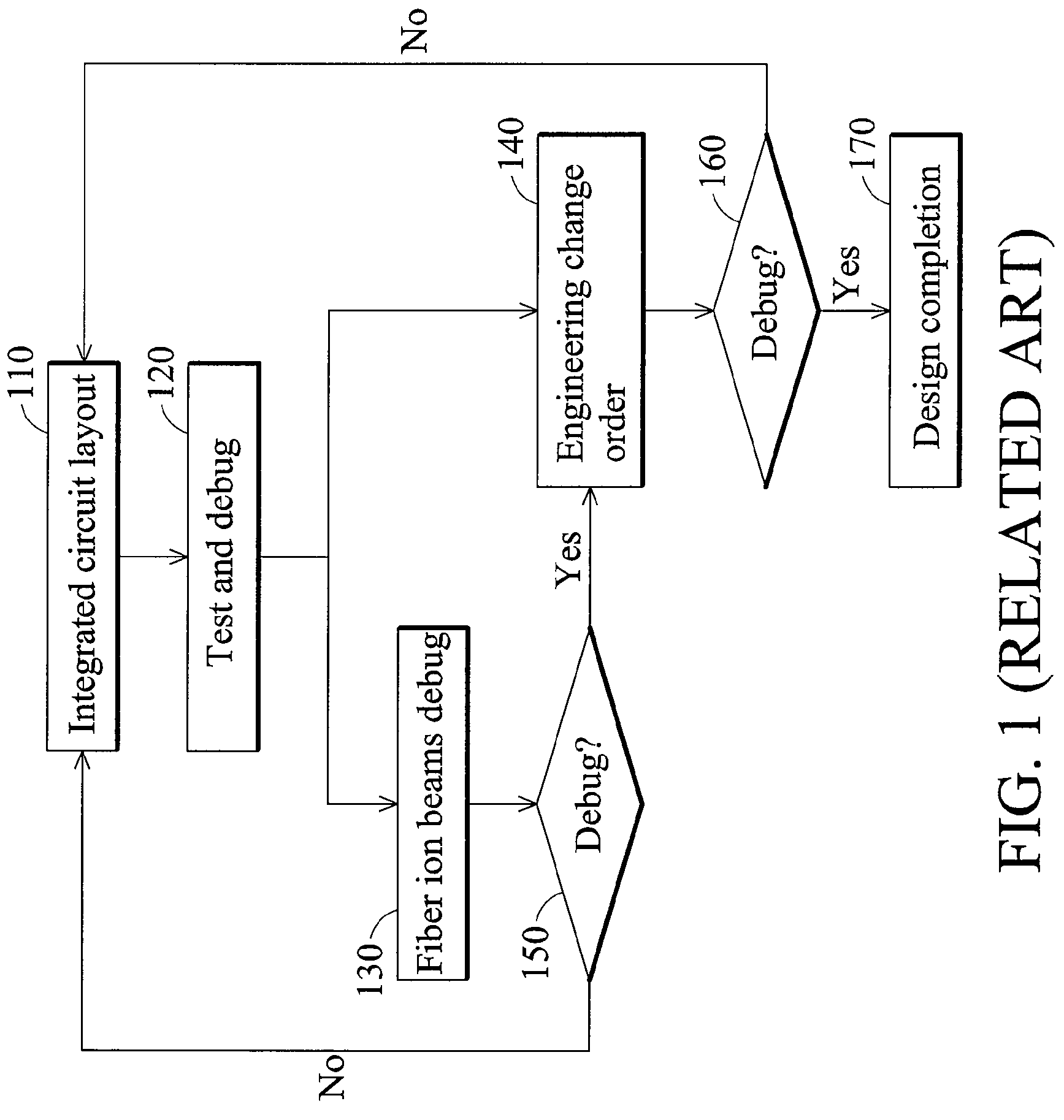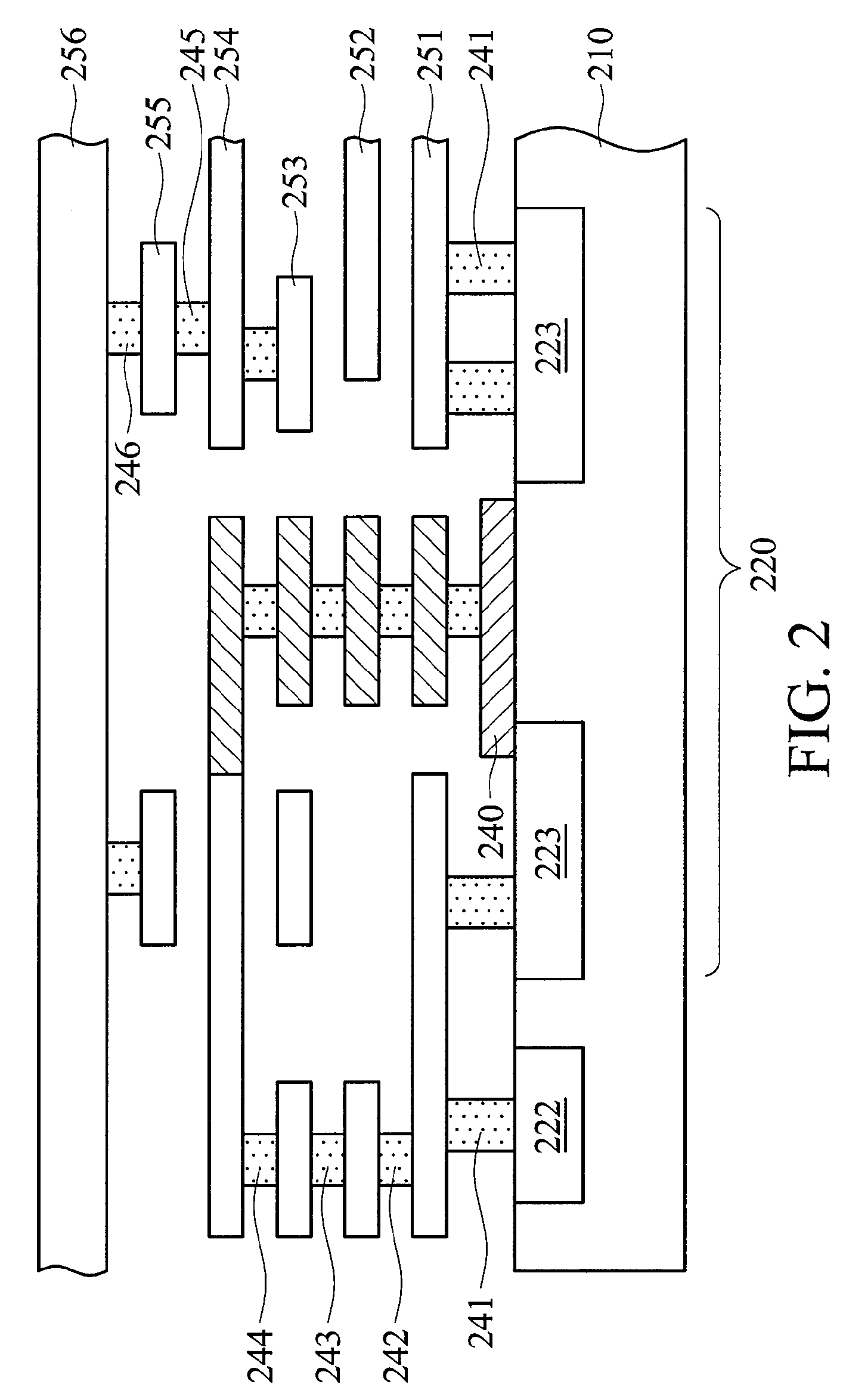Integrated circuit with spare cells
a technology of integrated circuits and spare cells, applied in the field of integrated circuits, can solve problems such as many restrictions to correct such errors, devices cannot be added into integrated circuits after the complete manufacturing process, and bugs or faults in integrated circuits
- Summary
- Abstract
- Description
- Claims
- Application Information
AI Technical Summary
Benefits of technology
Problems solved by technology
Method used
Image
Examples
Embodiment Construction
[0027]FIG. 2 shows an embodiment of an integrated circuit 200 with spare cells, comprising a p-type silicide structure and six stacked metal layers (1P6M integrated circuit). A standard cell, a spare cell 220, and a ploysilicon layer are formed on the substrate 210.
[0028]The spare cell 220 comprises a negative-channel metal oxide semiconductor (NMOS) transistor. The substrate 210 can be a p-type silicide structure and comprise a p+ doping region 222 and two n+ doping regions 223, wherein the two ends of the polysilicon layer 240 are located in the two n+ doping regions 223 respectively.
[0029]The polysilicon layer 240 serves as the gate electrode of the negative-channel metal oxide semiconductor (NMOS) transistor. One of the n+ doping regions 223 service as the source electrode of the NMOS transistor and the other n+ doping region 223 is the drain electrode of the NMOS transistor. In addition, the p+ doping region 222 is the bulk electrode of the NMOS transistor. After routing and co...
PUM
 Login to View More
Login to View More Abstract
Description
Claims
Application Information
 Login to View More
Login to View More - R&D
- Intellectual Property
- Life Sciences
- Materials
- Tech Scout
- Unparalleled Data Quality
- Higher Quality Content
- 60% Fewer Hallucinations
Browse by: Latest US Patents, China's latest patents, Technical Efficacy Thesaurus, Application Domain, Technology Topic, Popular Technical Reports.
© 2025 PatSnap. All rights reserved.Legal|Privacy policy|Modern Slavery Act Transparency Statement|Sitemap|About US| Contact US: help@patsnap.com



